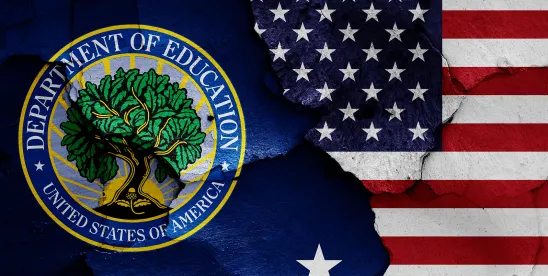As the U.S. faces surging electricity demand from AI data centers, infrastructure upgrades and decarbonization goals, nuclear energy is re-emerging as a viable clean power source. Central to this 2025 revival is the U.S. Department of Energy’s Loan Programs Office (LPO), which is helping push nuclear energy in the United States from near stagnation to resurgence.
LPO Nuclear Program:
The LPO provides federal loan guarantees under its Title 17 Clean Energy Financing Program to help bridge capital gaps and de-risk early-stage nuclear projects. These guarantees make it easier for developers to finance next generation Small Modular Reactors (SMRs), upgrades and restoration of retired plants, and traditional large-scale nuclear projects. Much like it did for solar projects in the program that ended in 2011, the LPO offers loan guarantees for project financing at attractive rates – facilitating large-scale capital that would otherwise not be available, particularly for newer technologies.
2025 LPO Highlights:
- Palisades Nuclear Plant Restart – in March and April 2025, LPO approved and disbursed approximately $57 million in loan guarantee funding (of the project’s total conditional loan guarantee of up to $1.52 billion) to restart the 800 MW Palisades plant located in Michigan, which is the first ever major U.S. nuclear reactivation.
- Vogtle Units 3 & 4 – The AP1000 reactors in Georgia, which have long been supported by the LPO (~$12 billion since 2010), are now online – demonstrating how LPO’s federal backing helps de-risk first-of-its kind technology.
- SMR & Advanced Reactors – Legislation like the ADVANCE Act of 2024 incentivizes advanced nuclear deployment by reducing licensing costs supporting high-assay low-enriched uranium (HALEU) supply and streamlining NRC reviews. DOE has announced funding through Title 17 for Gen III+ SMRs, including the Palisades restart and upcoming deployments by Holtec and NuScale.
- Fuel Supply & Licensing – DOE is channeling HALEU to companies including Westinghouse and TerraPower to support advanced designs. On May 23, 2025, four executive orders were signed mandating NRC and DOE to accelerate approvals of proposed nuclear projects and site selection, in order to streamline the federal nuclear permitting process. These orders are looking to quadruple U.S. nuclear capacity to 400 GW by 2050.
- Additional Government Funding – the 2026 federal budget requests $750 million in subsidy funding and $30 billion in new Title 17 loan authority, primarily for nuclear, critical minerals, grid upgrades and firm power.
LPO Application Process:
Applying for a DOE loan guaranty involves a structured process, and is not as simple as filling out a form. The LPO acts more like a commercial project finance lender with a public mission. The project sponsor will need to prepare a full project financing package and navigate the process through several stages. At a high level, the LPO will expect a bankable project, which will include third-party market validation, strong project contracts and a viable debt/equity stack. The process starts with filling out a Part I application form through the LPO portal that attaches a project summary, technology description, preliminary financial model, environmental considerations and basis for expected eligibility under Title 17 – a go/no-go is generally given by the LPO within 60 days. If invited, the sponsor will need to submit Part II of the application with a fee, which submission would include a detailed model, feasibility studies, market risk analysis, resumes of management team, material project contracts (site control, offtake, EPC, O&M), Phase I EIS, corporate org chart, and debt and equity funding commitments. DOE then does its due diligence, typically through independent technical, financial and legal consultants and, if successful, the next step is negotiation of a term sheet and a conditional commitment. Then comes finalization of equity commitments and third-party debt commitments, completion of NEPA process, signing of documentation and satisfaction of conditions precedent to closing. The timing from initial application to financial closing is expected to be about 2 years.
Tips:
- Lead with a bankable project team – top-tier EPC, O&M, legal, insurance
- Engage NEPA counsel early
- Pay attention to DOE’s policy priorities relating to domestic supply chains and labor standards
- Start dialogue with LPO staff before applying – they encourage early conversations
Conclusion:
With the Palisades Restart and AP1000 Vogtle units demonstrating renewed momentum and SMRs on the horizon, federal loan guarantees are proving their power. As the nation races to meet demand and climate goals alike, DOE’s financial backing could be the lynchpin that turns nuclear promise into reality – provided that fuel supply, licensing safety and budget support remain aligned.
To read our previous article about nuclear power, click here.




 />i
/>i
